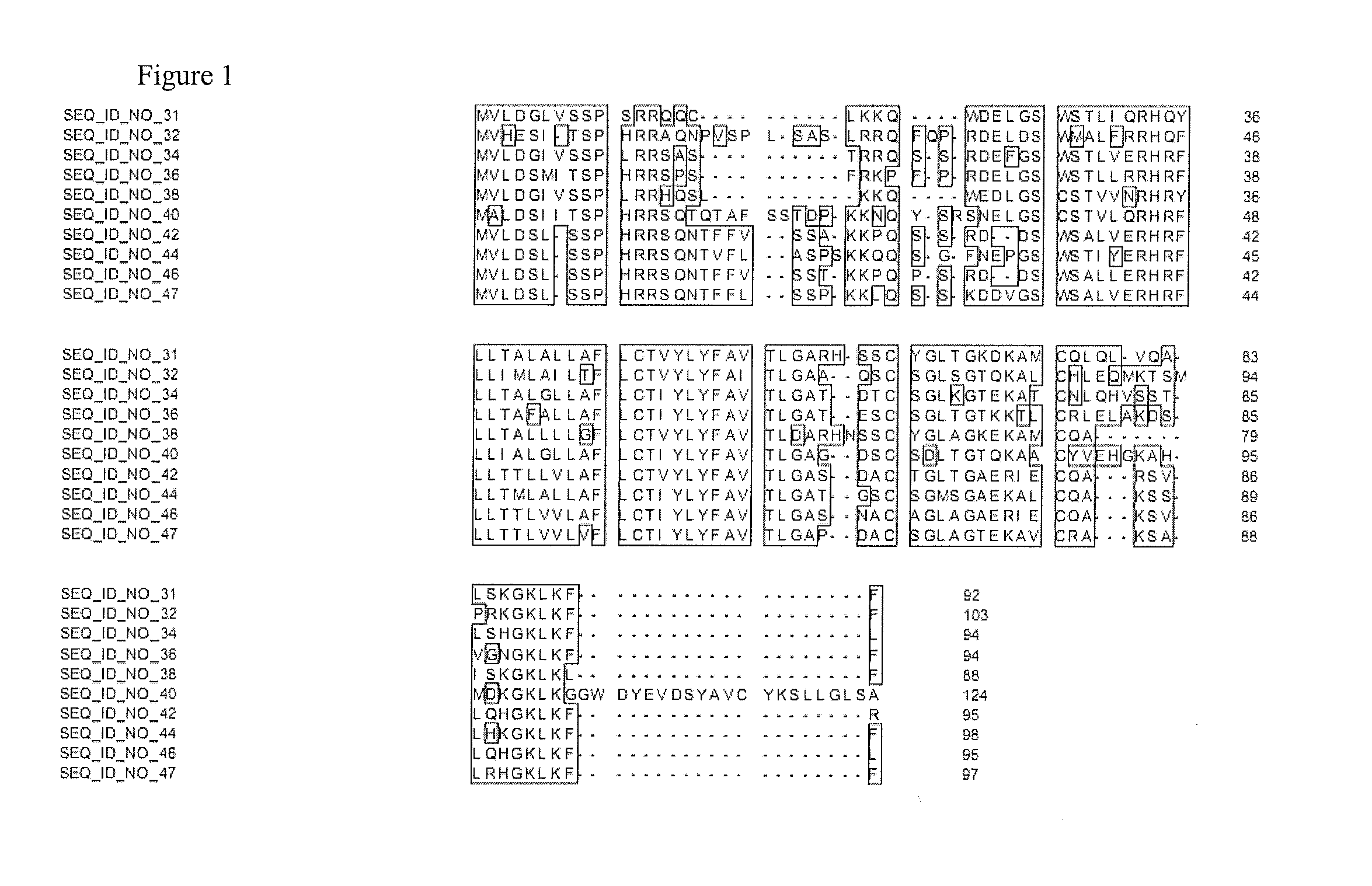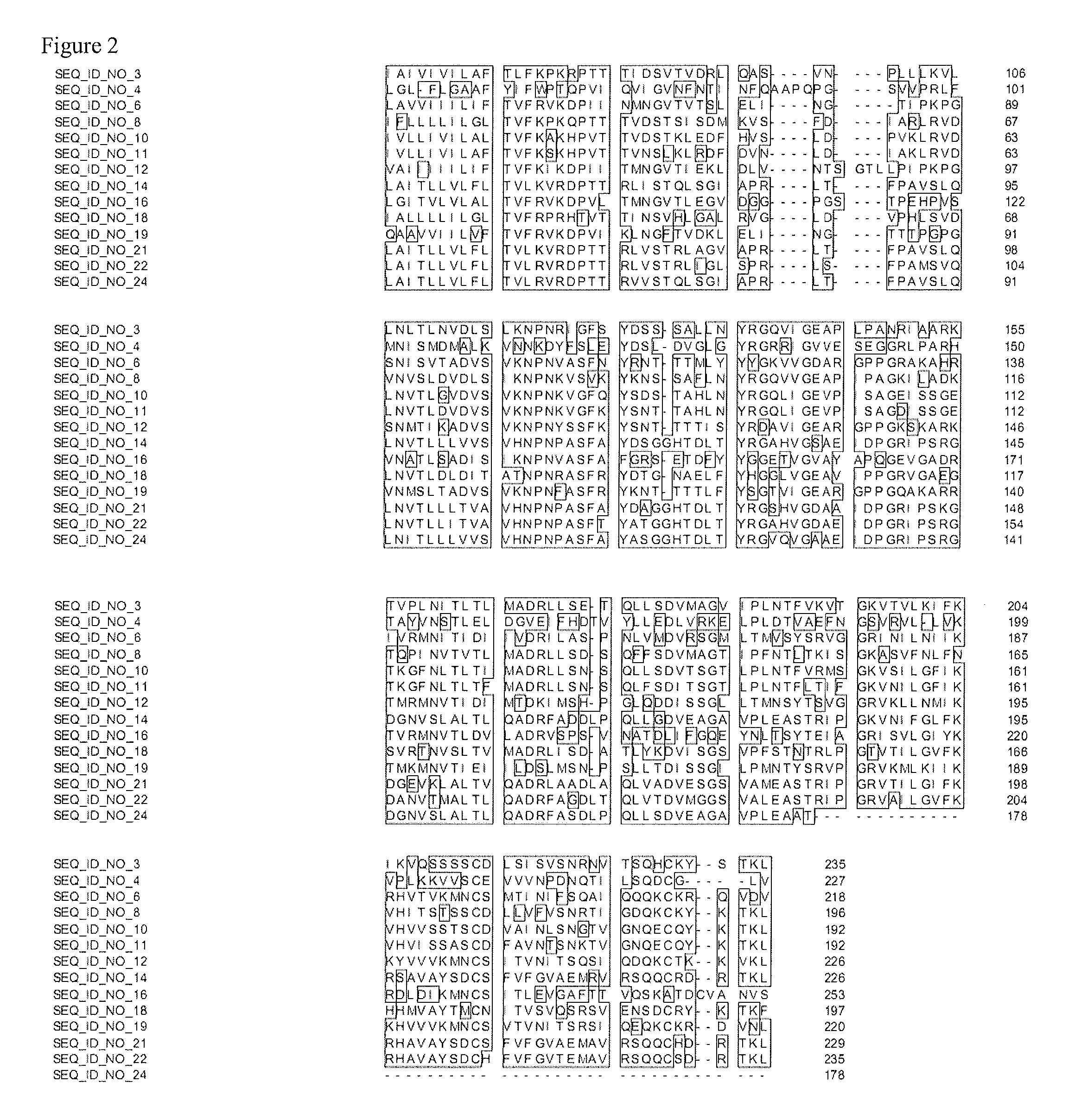Nucleotide sequences and corresponding polypeptides conferring improved agricultural and/or ornamental characteristics to plants by modulating abscission
a technology of nucleotide sequences and corresponding polypeptides, which is applied in the direction of peptide sources, organic chemistry, biochemistry apparatus and processes, etc., can solve the problems of structurally weak plant parts or organs to be dropped, inducing abscission, and crop dropping, so as to improve the pollination rate and yield, increase the uniformity of flowering time, and improve the effect of yield optimization
- Summary
- Abstract
- Description
- Claims
- Application Information
AI Technical Summary
Benefits of technology
Problems solved by technology
Method used
Image
Examples
example 1
Transgenic Arabidopsis Plants
[0165]The following symbols are used in the Examples with respect to Arabidopsis transformation: T1: first generation transformant; T2: second generation, progeny of self-pollinated T1 plants; T3: third generation, progeny of self-pollinated T2 plants; T4: fourth generation, progeny of self-pollinated T3 plants. Independent transformations are referred to as events.
[0166]The following is a list of nucleic acids that were isolated from Arabidopsis thaliana plants, CeresClone:32430 and CeresClone:1678.
[0167]Each isolated nucleic acid described above was cloned into a Ti plasmid vector, CRS338, containing a phosphinothricin acetyltransferase gene which confers Finale™ resistance to transformed plants. Constructs were made using CRS338 that contained CeresClone:32430 or CeresClone:1678, each operably linked to a 35S promoter. Wild-type Arabidopsis thaliana ecotype Wassilewskija (Ws) plants were transformed separately with each construct. The transformations ...
example 2
A validated Assay for Analyzing Transgenic Plants for Delayed Petal Abscission
[0169]Soil is prepared by mixing 60% autoclaved Sunshine Mix #5™ with 40% vermiculite in 24L increments. Three Tbsp of Marathon™ are added per 24 L of soil prepared. Soil is thoroughly mixed using an automatic soil mixer. The soil is turned for at least 10 minutes so that soil lumps are completely removed. The resulting soil mixture will henceforth be referred to as refined soil.
[0170]For each candidate×generation×event to be tested, 24 pots (8.0 cm×8.0 cm×8.0 cm) are prepared as follows. Pots are placed in one tray with holes on the bottom, and a no-hole-ridged bottom tray is placed underneath for watering. Pots are loosely filled with dry refined soil mix to the brim. Soil is allowed to settle with a quick shake and excess soil is removed from the top using the edge of a ruler. Using this methodology, each pot holds approximately 65 g of dry refined soil.
[0171]Four L of filtered water are added to the bo...
example 3
Results for ME03564 (SEQ ID NO:3) (Clone 1678; cDNA ID 23364915; At3g54200) Events
[0178]Ectopic expression of Clone 1678 under the control of the 35S promoter results in a delayed petal abscission compared to controls. Clone 1678 was identified as comprising a gene with unknown function. ME03564 was identified as an ethylene-insensitive line from a superpool screen. The transgene sequence was obtained for 9 candidate plants. Seven candidate sequences BLASTed to ME03564. T2 and T3 seed from 2 events of ME03564 containing 35S::clone 1678 was analyzed for delayed petal abscission using the assay described in Example 2. The Ti plasmid vector used for this construct, CRS 338, contains the Ceres-constructed, plant selectable marker gene phosphinothricin acetyltransferase (PAT) which confers Basta resistance to transformed plants.
[0179]Two events of ME03564 showed significantly delayed petal abscission in both generations. The number of flowers with turgid petals on the 10th day after bolt...
PUM
| Property | Measurement | Unit |
|---|---|---|
| Fraction | aaaaa | aaaaa |
| Fraction | aaaaa | aaaaa |
| Time | aaaaa | aaaaa |
Abstract
Description
Claims
Application Information
 Login to View More
Login to View More - R&D
- Intellectual Property
- Life Sciences
- Materials
- Tech Scout
- Unparalleled Data Quality
- Higher Quality Content
- 60% Fewer Hallucinations
Browse by: Latest US Patents, China's latest patents, Technical Efficacy Thesaurus, Application Domain, Technology Topic, Popular Technical Reports.
© 2025 PatSnap. All rights reserved.Legal|Privacy policy|Modern Slavery Act Transparency Statement|Sitemap|About US| Contact US: help@patsnap.com


